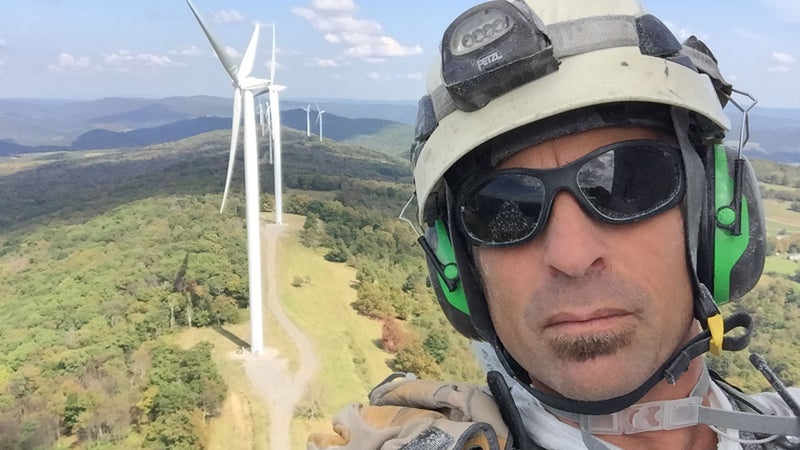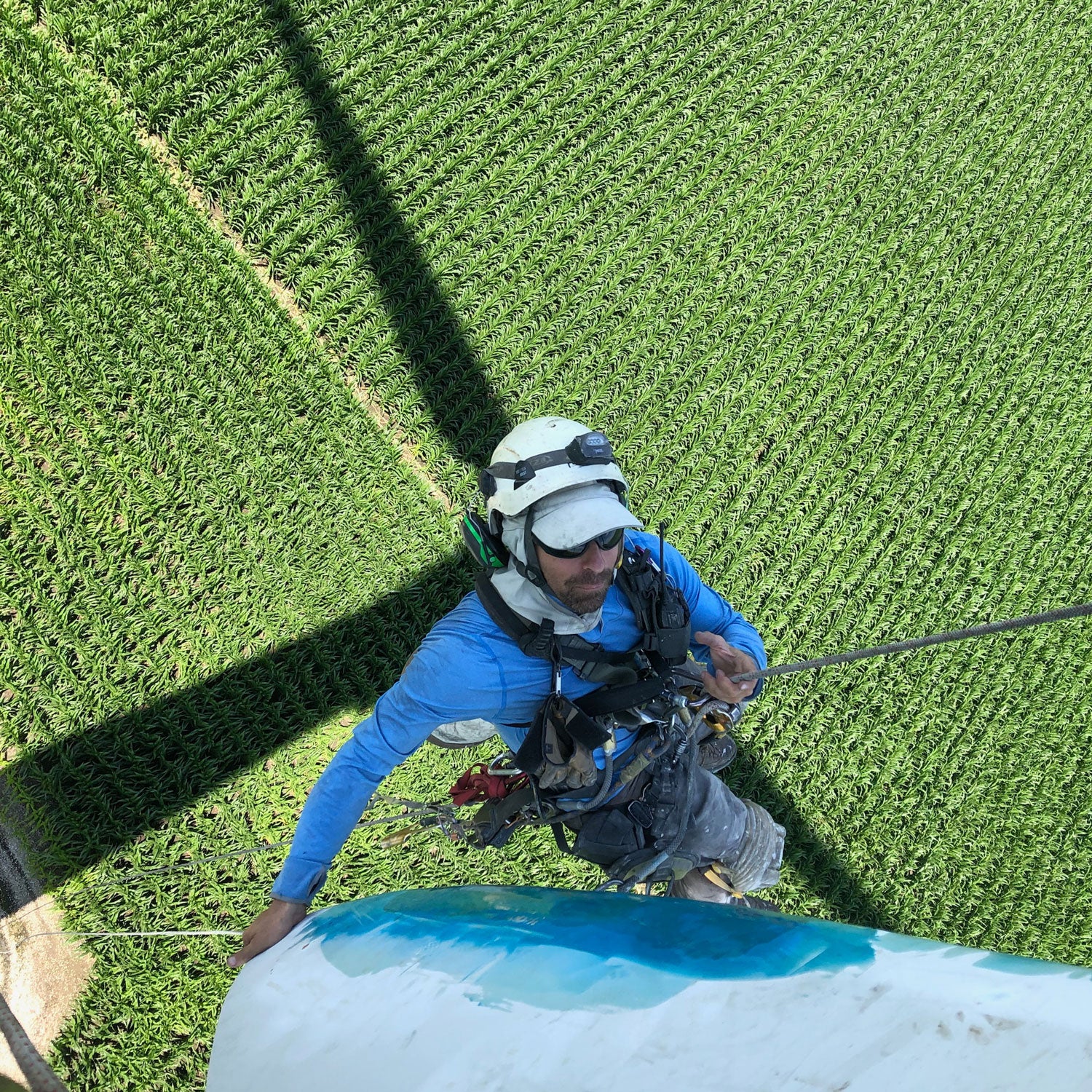Few serious climbers are lucky enough to go pro and make a comfortable living from sponsorships. The majority string together side jobs that barely cover rent but allow them to climb when they please. Then there are climbers like Eric “Rudy” Ruderman, who discovered the secret to building a career is to get more creative with what you climb.
Ruderman grew up surfing in Long Island, New York, and discovered climbing in his late twenties after moving to California, where he earned a BA at San Jose State University with an emphasis in photography. “I spent way too much time in the darkroom,” he says. “After I graduated, all I wanted to do was be outside.” After graduating, in 2004, Ruderman took his first belay class with a girl he was dating. The relationship didn’t last, but the climbing did. Ruderman started hitting the gym five days a week.
Then he discovered Yosemite. “I didn’t think anything could take me away from the ocean, but then I got into climbing and realized mecca was four hours away,” Ruderman says. “I needed to live there but didn’t want to be your typical dirtbag climber. I wanted to work and participate in the community.”
His solution was to join the Yosemite Search and Rescue crew, which required climbing, rope-rigging experience, and medical knowledge. He got his emergency medical technician and wilderness first responder certifications and volunteered with the organization from 2005 to 2009. The work was seasonal, and if he was lucky, Ruderman could make $12,000 in four months. He liked the lifestyle—climbing in Yosemite half the year, traveling the other half—but he wanted to start making and saving more money.

Ruderman, now 42, heard fellow climbers talking about jobs rigging stages for shows in Las Vegas. He was hired in 2009, just as the recession hit. “I thought, what is the next thing I can do to further progress my desirability to employers?” he says. A friend was teaching a weeklong rope-access technician course in Las Vegas, so Ruderman signed up and obtained his Society of Professional Rope Access Technicians certification, as well as the internationally recognized Industrial Rope Access Trade Association certification. Then he started sending his résumé to wind turbine maintenance companies.
A by the Department of Energy showed wind to be the fastest-growing energy source in the world. Wind energy technician was the in all sectors in 2016, according to the Bureau of Labor Statistics, and numbers are still expected to double over the next ten years. Wind energy technicians do most of their work in the turbine’s nacelle, the area on top of the tower that houses the main controls. But maintenance work on the actual blades, which are open to the elements, is handled by rope-access technicians, who need advanced climbing and rope-rigging skills. As the demand for wind turbines grows, so will the need for people to fix them.
, a wind turbine technician company based in Santa Cruz, California, offered Ruderman a job as gear manager. “This sounds cliché, but I was living out of my van, climbing in Bishop, and thinking about going to Europe when I got the call,” he says. “I thought, God, it would be responsible of me to say yes.” He lasted a year and a half in the office job and then jumped at the opportunity to move into the field to climb and help with repairs and maintenance.
Ruderman says 90 percent of what he fixes is lightning damage. Turbine towers are between 250 and 300 feet tall, on average. Technicians climb a ladder inside the tower and anchor ropes. Then they rappel off the nose cone and secure themselves to the blunt side of the wind turbine blade, taking precautions not to get in the way of the sharp side, which could cut the rope. They’re often working in high winds with power tools. “We’re basically doing construction work at height on ropes,” Ruderman says. “Safety is crucial.” Every job is performed by a team of two or more, with one person usually staying lower down to manipulate the blades and haul up supplies.
Ruderman took his first belay class with a girl he was dating. The relationship didn’t last, but the climbing did.
Today, after eight years with the company, Ruderman has worked his way up to a supervisor position. The job requires travel and long hours, but Ruderman likes that it also gives him chunks of time off, plus financial security. Work tends to be seasonal, May through October, and a typical job lasts four to five weeks. Companies generally start technicians at around $17 an hour, with the possibility of advancing to $35 an hour depending on skills and certifications. “I’ve done the math in my head of what the annual hours would be for a full-time, 40-hour-a-week salary job, with vacation, holidays, and weekends factored in,” he says. “Mine are similar, but I just squeeze them all into a 70-to-80-hour workweek.”
As demand for rope-access technician work increases, more job opportunities can be found off-season, but Ruderman usually prefers taking winters off to travel. Once on a job, the company pays for everything, he says. “When I leave my place in Santa Cruz, my transportation to the airport, flight, rental car, gas, hotel or Airbnb are all taken care of,” he says. “We get a per diem for food and phone and computer usage. I’m able to make money but also save money.”
It’s a good job for a person who wants a stable lifestyle and more outdoors time than desk time. But travel comes with its ups and downs. “Most wind farms are in the Midwest, where it’s super flat with corn and soy as far as the eye can see,” Ruderman says. “There isn’t much rock climbing to be done.” And an erratic travel schedule makes dating challenging, he says. But then there are farms in places like Maui, one of his favorite locations. “When the winds are high and we can’t work, I can go surf,” Ruderman says.


